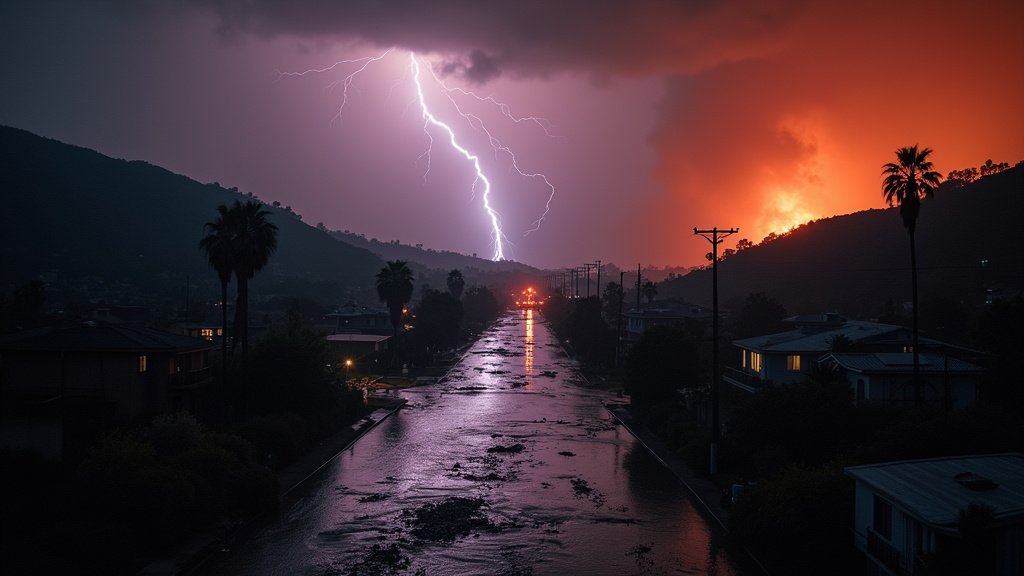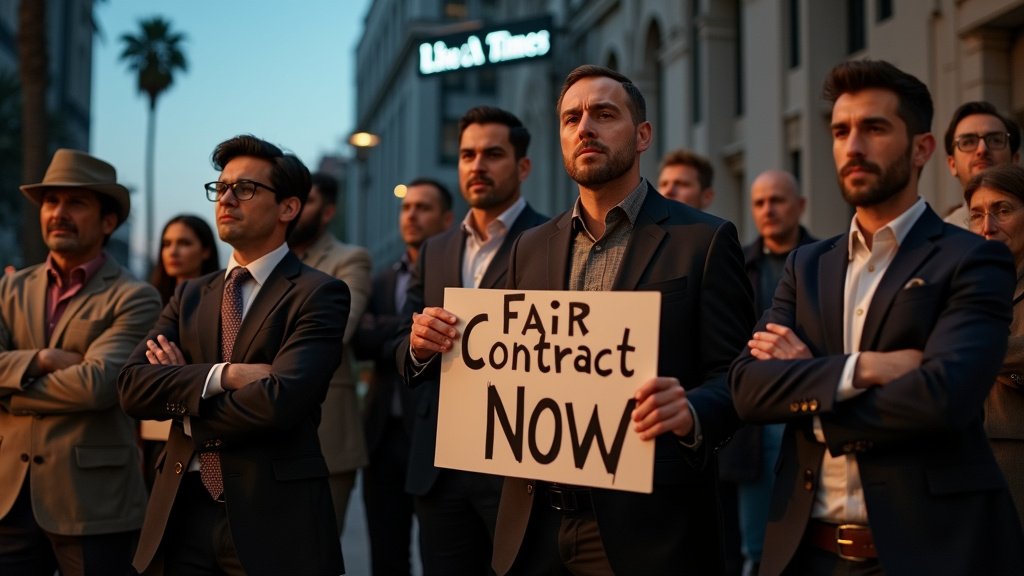Los Angeles County Faces Dual Crisis: Rare October Storm Triggers Evacuations While Emergency Declared Over Immigration Raids; Fisher Fire Ignites
The dual threat of a rare October storm and federal immigration enforcement actions converged in Los Angeles County, prompting emergency declarations and evacuations. As a potent storm system battered Southern California from October 13-15, 2025, bringing heavy rainfall, high winds, and mudslide risks, county supervisors simultaneously declared a local state of emergency on October 14th in response to federal immigration raids that have instilled widespread fear and disruption. Adding to the challenging conditions, a new wildfire, dubbed the Fisher Fire, was reported in Los Angeles County on October 13th.
Rare October Storm Batters Southern California
A significant and unusual October storm struck Southern California, delivering a potent mix of heavy rain, strong winds, and the persistent threat of mudslides in areas still recovering from recent wildfires. Evacuation orders were issued for approximately 115 homes, primarily in the Pacific Palisades and Mandeville Canyon neighborhoods. These areas were particularly vulnerable, having been devastated by a major wildfire in January 2025 that claimed over 30 lives and destroyed more than 17,000 homes and buildings in Los Angeles County. The storm, described by the National Weather Service’s Los Angeles office as a “rare and very potent storm system,” was expected to bring between 2 to 4 inches of rain in some locations. Forecasters also warned of the potential for isolated tornadoes and significant debris flows due to the storm’s unpredictable nature. Thousands experienced power outages, and several accidents were reported on flooded roads as drivers hydroplaned. State resources, including swiftwater rescue teams and mud/debris flow crews, were prepositioned across Los Angeles, Ventura, Orange, and Santa Barbara counties in anticipation of the severe weather.
LA County Declares Emergency Amid Immigration Raids
Coinciding with the severe weather, the Los Angeles County Board of Supervisors declared a local state of emergency on October 14, 2025, directly addressing the impact of federal immigration raids across the region. Supervisors cited that these federal operations, which have intensified since June, have created a climate of fear, disrupted daily life, and destabilized immigrant communities and the local economy. According to county staff, a survey indicated a 62% drop in average weekly earnings for immigrants, with 71% returning to work despite fears of deportation. Supervisor Janice Hahn stated that entire families have become destitute due to breadwinners being taken from their workplaces, emphasizing the need to support immigrant communities during this “emergency”. The declaration aims to empower the county to mobilize resources, expedite assistance, and request state and federal aid to protect and stabilize affected communities. It also opens the door for potential protections, such as an eviction moratorium, though county attorneys cautioned that any such measure must be temporary and narrowly tailored. The proclamation was approved by a 4-1 vote, with Supervisor Kathryn Barger opposing, arguing that federal immigration actions did not meet the criteria for an emergency and could lead to legal challenges and financial burdens on landlords. Barger advocated for targeted, community-centered programs rather than what she termed “symbolic gestures”.
The Fisher Fire Emerges
Adding to the region’s challenges, a new wildfire, identified as the Fisher Fire, was reported in Los Angeles County on October 13, 2025. The fire began on federal land managed by the U.S. Forest Service. At the time of reporting, information regarding its containment progress and cause was not yet determined. The emergence of this fire, alongside the severe weather and the immigration-related emergency declaration, underscored a period of multiple converging crises for Los Angeles County.
Implications and Future Outlook
The dual crises of extreme weather and federal immigration enforcement present significant challenges for Los Angeles County. The emergency declaration related to immigration raids is intended to facilitate rapid assistance, including potential rent relief and legal aid, for residents impacted by these operations. However, concerns remain regarding the legal feasibility and financial implications of measures like eviction moratoriums. Meanwhile, the storm’s impacts, including potential mudslides in burn-scarred areas, highlight the ongoing vulnerability of certain communities. The confluence of these events underscores the need for coordinated responses and robust support systems for the diverse populations of Los Angeles. The Fisher Fire, though small in comparison to the broader events, added another layer of concern for emergency responders already stretched thin. This period of overlapping emergencies in Los Angeles represents a critical test for the region’s resilience and its capacity to address the multifaceted needs of its residents.





